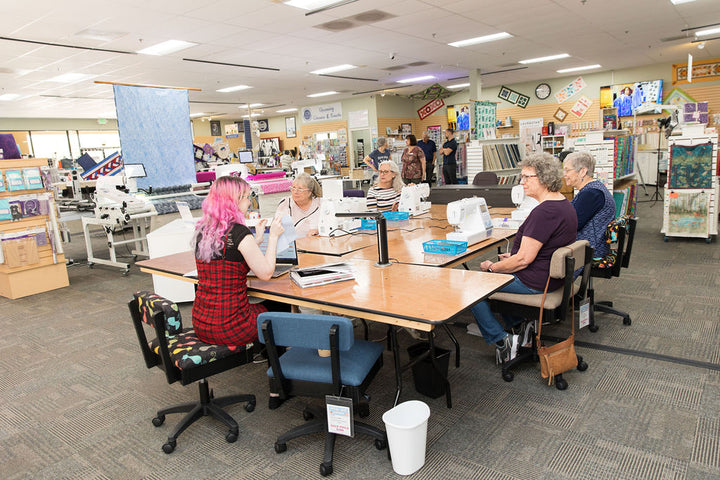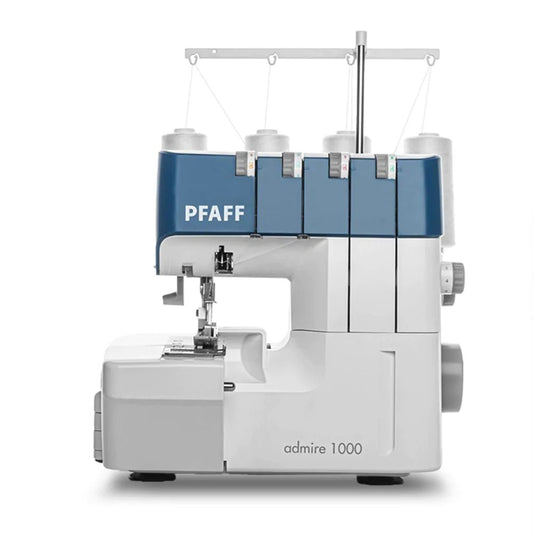-
All Quality Sewing Offerings
Baby Lock Applaud Deluxe Coverhem
Regular price $3,499.00Sale price $3,499.00 Regular priceUnit price per$4,499.0022% offSale -
All Quality Sewing Offerings
Pfaff Admire 1000 Overlock Serger
Regular price $599.00Sale price $599.00 Regular priceUnit price per -
-
All Quality Sewing Offerings
Juki MO-655 2/3/4/5 Thread Overlock and Chainstitch with Differential Feed and Rolled Hem
Regular price $649.00Sale price $649.00 Regular priceUnit price per$1,199.0046% offSale -
All Quality Sewing Offerings
Janome CoverPro 900CPX Coverstitch Machine
Regular price $539.00Sale price $539.00 Regular priceUnit price per$599.0010% offSale -
All Quality Sewing Offerings
Bernette B42 Funlock Coverstitch Machine
Regular price $499.00Sale price $499.00 Regular priceUnit price per$799.0038% offSale -
All Quality Sewing Offerings
Viking Amber Air S 600 Coverlock Machine
Regular price $5,299.00Sale price $5,299.00 Regular priceUnit price per$5,999.0012% offSale -
All Quality Sewing Offerings
Pfaff Admire Air 7000 Coverlock Serger
Regular price $5,299.00Sale price $5,299.00 Regular priceUnit price per$5,999.0012% offSale -
All Quality Sewing Offerings
Juki MCS-1600 Cover and Chain Stitch Machine
Regular price $999.00Sale price $999.00 Regular priceUnit price per -
All Quality Sewing Offerings
Juki MO-735 2/3/4/5 Thread Serger
Regular price $1,099.00Sale price $1,099.00 Regular priceUnit price per$1,699.0035% offSale -
All Quality Sewing Offerings
Juki Akane MO-3000QVP 2/3/4 Air Thread Serger
Regular price $2,299.00Sale price $2,299.00 Regular priceUnit price per$2,799.0018% offSale -
Sale
-
All Quality Sewing Offerings
Viking Amber Air S 400 Air Threading Serger
Regular price $1,379.00Sale price $1,379.00 Regular priceUnit price per$1,799.0023% offSale -
All Quality Sewing Offerings
Regular price $1,059.00Sale price $1,059.00 Regular priceUnit price per$1,099.004% offSale -
Sale
-
All Quality Sewing Offerings
Juki MO-80CB 2/3/4 Thread Serger Overlock Machine
Regular price $499.00Sale price $499.00 Regular priceUnit price per$799.0038% offSale
FAQs
What is a serger machine, and how does it differ from a regular sewing machine?
A serger machine, also known as an overlock machine, differs from a regular sewing machine by using multiple loopers and threads to create durable, stretchy seams. Sergers are designed to seal fabric edges and join pieces together, especially for knit fabrics and upholstery. While regular sewing machines are versatile for various projects, serger machines specialize in delivering professional results by trimming and finishing fabric edges simultaneously, which regular sewing machines cannot do.
What are the benefits of using a serger sewing machine?
A serger machine offers numerous benefits to any sewer. It provides a professional finish by trimming raw edges while sewing, preventing fraying and ensuring clean, durable seams. Sergers operate faster than regular sewing machines, letting you tackle more complex projects faster. Thanks to the strong and stretchy overlock stitch, they excel at handling knit and stretchy fabrics. Additionally, sergers can create decorative edges and seams, adding to your projects' overall quality and appearance.
Can I use a serger for all my sewing projects, or do I still need a regular sewing machine?
While a serger is highly useful, it cannot completely replace a regular sewing machine. Sergers are mainly used for joining seams and preventing fabric from fraying, while a regular sewing machine is great for tasks like sewing hems and curtains, and replacing zippers. Essentially, a regular sewing machine is necessary for foundational stitches, while a serger machine complements it by enhancing seam durability and appearance, especially for knit fabrics.
What should I look for when buying a serger sewing machine?
When looking for a serger machine for sale, consider a model with four or five threads rather than those with only two or three threads. These tend to offer more versatility for different seam types, adjustable stitch length, and other features. Ensure the serger machine’s motor voltage matches local standards to avoid compatibility issues and look for one with a metal frame or heavier build, as these tend to be more durable and stable. Investing in a well-built, versatile serger machine will enhance your sewing capabilities and project outcomes.
What is a serger with coverstitch and why is it useful?
A serger with a coverstitch function combines two essential finishing techniques into one machine. While a serger machine prevents fabric from unraveling by creating an overlock stitch, a coverstitch machine specializes in simultaneously sewing stretchy hems and overcasting fabric edges without cutting them. This makes it particularly valuable for hemming knit garments like T-shirts and sportswear, as it provides stretchy seams that retain their elasticity without puckering or distorting the fabric.
Should I choose a domestic or heavy-duty serger?
Choosing between a domestic and a heavy-duty serger machine depends on your sewing needs. A domestic serger is satisfactory for home use and small-scale projects and provides quality results. However, a heavy-duty industrial serger is more suitable if you frequently work with multiple layers of fabric or materials like sequins and upholstery. Industrial sergers offer superior performance but require a significant investment and more space. For most home sewers, a domestic serger machine is more practical and cost-effective.



















